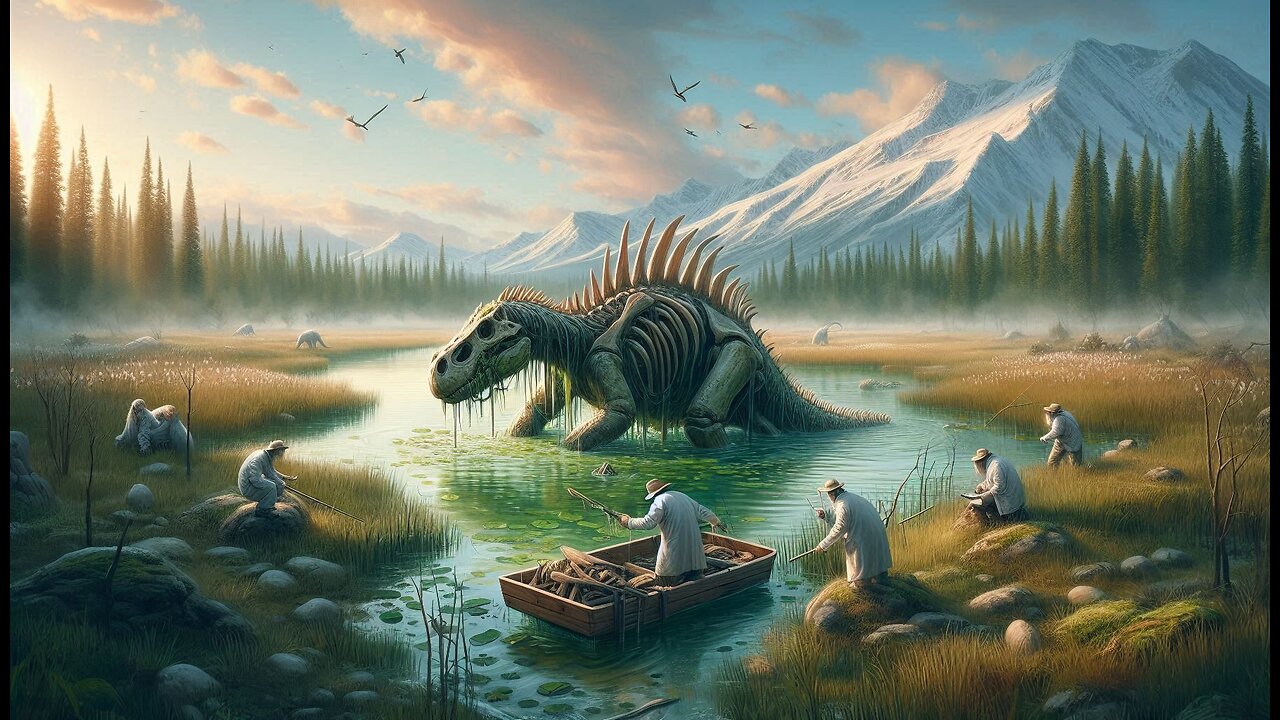Premium Only Content

Scientists Discover Ancient “Swamp Dweller” From the Age of the Dinosaurs in Colorado
Colorado paleontologists found a rare fossil mammal, Heleocola piceanus, from 70-75 million years ago. The discovery shows some ancient mammals were larger than previously thought.
A team of paleontologists near Rangely, Colorado, has discovered a new (or rather, ancient) state resident—a fossilized mammal roughly the size of a muskrat, which likely scurried through swamps during the Age of Dinosaurs.
The researchers, led by the University of Colorado Boulder’s Jaelyn Eberle, published their findings in the journal PLOS ONE.
Eberle and her colleagues named their discovery, which they identified from a piece of jawbone and three molar teeth, Heleocola piceanus. The animal lived in Colorado roughly 70 to 75 million years ago—a time when a vast inland sea covered large portions of the American West. (Fittingly, “Heleocola” roughly translates to “swamp dweller” in Latin).
“Colorado is a great place to find fossils, but mammals from this time period tend to be pretty rare,” said Eberle, curator of fossil vertebrates at the CU Museum of Natural History and professor in the Department of Geological Sciences. “So it’s really neat to see this slice of time preserved in Colorado.”
Compared to much larger dinosaurs living at the time like tyrannosaurs or the horned ancestors of Triceratops, the new fossil addition to Colorado might seem tiny and insignificant. But it was surprisingly large for mammals at the time, Eberle said.
-
 DVR
DVR
In The Litter Box w/ Jewels & Catturd
20 hours agoDemocrats Come Unglued | In the Litter Box w/ Jewels and Catturd Ep. 735 - 2/5/2025
17.3K16 -
 1:44:25
1:44:25
The Quartering
3 hours agoTrump Impeachment, Democrat Insurrection, Massive Scandal At Politico & DC Crash Update!
48.7K37 -
 LIVE
LIVE
Dr Disrespect
5 hours ago🔴LIVE - DR DISRESPECT - KINGDOM COME: DELIVERANCE 2 - FIRST IMPRESSION
3,467 watching -
 37:54
37:54
CryptoWendyO
3 hours ago $0.03 earnedBEST DAY IN CRYPTO HISTORY
301 -
 LIVE
LIVE
Film Threat
7 hours agoVERSUS: FANTASTIC FOUR + CAPTAIN AMERICA + QUENTIN TARANTINO'S EPIC RANT | Film Threat Versus
101 watching -
 9:06
9:06
CryptoWrld
11 hours ago $0.82 earnedHow Nonprofits Use Blockchain Tech
8.87K2 -
 16:38
16:38
SLS - Street League Skateboarding
14 days agoRayssa Leal's Most Clutch SLS Wins Ever! 🥶🏆
73.8K4 -
 1:06:29
1:06:29
Russell Brand
5 hours agoGaza Takeover? Trump’s Bold Plan Sparks Global Outrage – SF532
113K252 -
 1:57:32
1:57:32
The Charlie Kirk Show
4 hours agoGaza Thoughts + DOGE The Destroyer | Sen. Schmitt, Benz | 2.5.2025
124K29 -
 1:21:08
1:21:08
Simply Bitcoin
5 hours ago $1.30 earnedNEW REPORT: Bitcoin ETF Insider Doubles Down on UNTHINKABLE 2030 prediction! | EP 1176
33.5K1